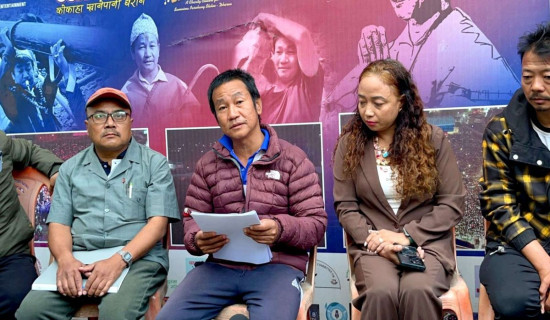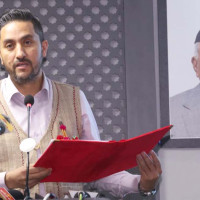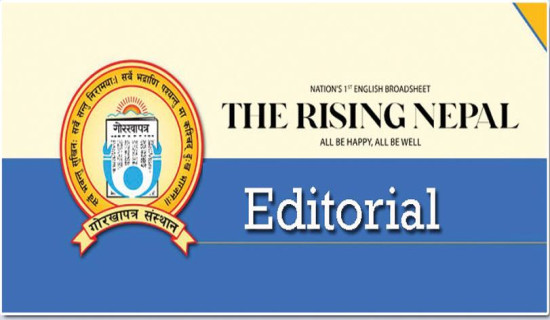- Wednesday, 3 December 2025
Ensure Constitutional Rights Of Dalits
The constitutional guarantees under which Nepal began its march towards an egalitarian society free of caste discrimination continue to stand firm. Recent events like razing a house belonging to Dalits in Siraha make one question whether the promises can be converted into reality. It is not only indicative of the continued marginalisation of Dalits but also of systemic failures in upholding their rights.
Article 24 of the constitution, which promotes the abolition of all forms of discrimination, specifically on a caste basis, goes as far as outlawing untouchability and caste discrimination in both the public and private realms. Additionally, Article 40 asserts that Dalits have a right to representation in state organs according to proportional inclusion. To this end, the Caste-based Discrimination and Untouchability (Offences and Punishment) Act, 2011, was passed to furnish the means of realising constitutional provisions of this nature by criminalising acts of discrimination and setting forth penalties for their perpetration.
Representation
Despite these legal provisions, Dalit representation in public institutions remains woefully low. According to a recent estimation, Dalits comprise around 13 per cent of the population of Nepal, yet their share in the House of Representatives is only about 5.81 per cent. In the National Assembly and Council of Ministers, there is an abysmal representation for Dalits. Such inequalities undermine the legal object of the promotion of proportional inclusion under the Constitution while also raising skepticism on the effectiveness of affirmative action.
The socio-economic standing of Dalits is a testimony to unequal treatment. The educational achievements of Dalits happen to lag considerably behind the national averages; hence, they experience high dropout rates and low enrolment in higher education. This further increases the educational gap caused by poverty, preventing members from accessing employment opportunities. The same stereotype has excluded Dalits from the avenues of economic advancement.
The demolition of Deepak Malik Dom's house in Aurahi Rural Municipality-5, Siraha, shows how deep-rooted caste-based discrimination is. Constructed under the Janata Awas Programme, this house was demolished for Mahayagya, a grand ceremony of the Hindus. The rural municipality chairman and organiser of the programme made this justification: "It would pollute the place if there is a Dalit family near the place of worship." Such incidents are displacing families, but they also stand as symbols of the general stigmatisation of the entire caste as ‘untouchable.’
The National Human Rights Commission (NHRC) immediately initiated an investigation into the incident through team members. Subsequently, there were some arrests, including that of the rural municipality chairman, giving a glimmer of hope for accountability. Whether these measures will ensure justice and prevent the recurrence of violations remains to be seen. Historically, perpetrators have escaped substantial punishment because the enforcement of anti-discrimination legislation has not been effective.
Repeated incidents of discrimination based on caste, including the one in Siraha, manifest intense and deep-rooted hegemonic structures. Such structures have been sanctified by societal norms, cultural practices, and institutional biases, harming the entire Dalit population. The notion of ‘purity’ and upper-caste rituals that led to the destruction of a house belonging to a Dalit family is an example of how cultural hegemony has ordered social stratification. To end the entrenched caste discrimination, multi-pronged strategies, including law enforcement and grass-roots awareness programmes are needed.
Marginalisation of Dalits in education and employment pushes them into the vicious cycle of poverty and exclusion. A lack of access to quality education restricts access to high socio-economic mobility for the Dalits, thus forcing them to continue low-wage occupations. This disenfranchisement limits the economic opportunity for better access to education, creating a full cyclical trap of disadvantage. Ways to combat this cycle will include targeted interventions such as scholarships, affirmative action in employment, and community development.
Efficacy of legal provisions
If we take into account the persistence of caste-based discrimination despite rather well-laid legal mechanisms, then questions about the applicability and efficacy of these provisions arise. Are the existing laws enough, or does the problem lie in their implementation? What part do societal attitudes and cultural norms play in annulling the legal protections? These questions call for a serious investigation into the two elements: the law and its workings in the socio-cultural milieu.
To make constitutional promises into reality for Dalits, there has to be a holistic approach. First, ensuring the enforcement of anti-discrimination laws; second, encouraging representation of Dalits in political and administrative fora; and last, providing socio-economic programmes directed at uplifting them. Educational reforms should be geared towards inclusion, whereas economic policies should counteract occupational segregation. In conclusion, it is imperative to bridge the gap between the legal promises and the conditions of Dalit communities on the ground. This requires not only legal and policy interventions but also a social transformation that values equality, dignity, and respect for all citizens, regardless of caste.
(Yadav is pursuing B.A.L.L.B at Kathmandu School of Law.)















